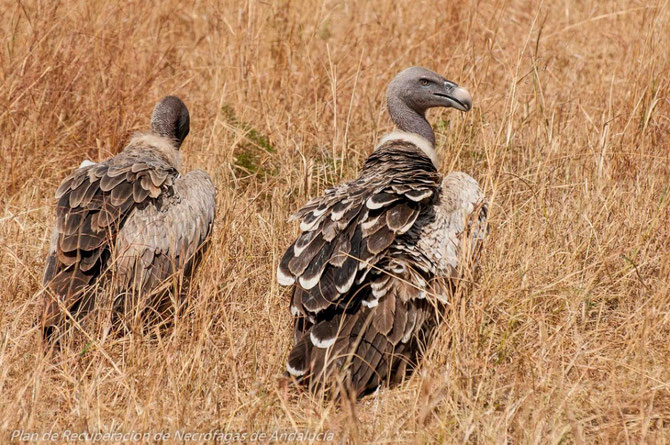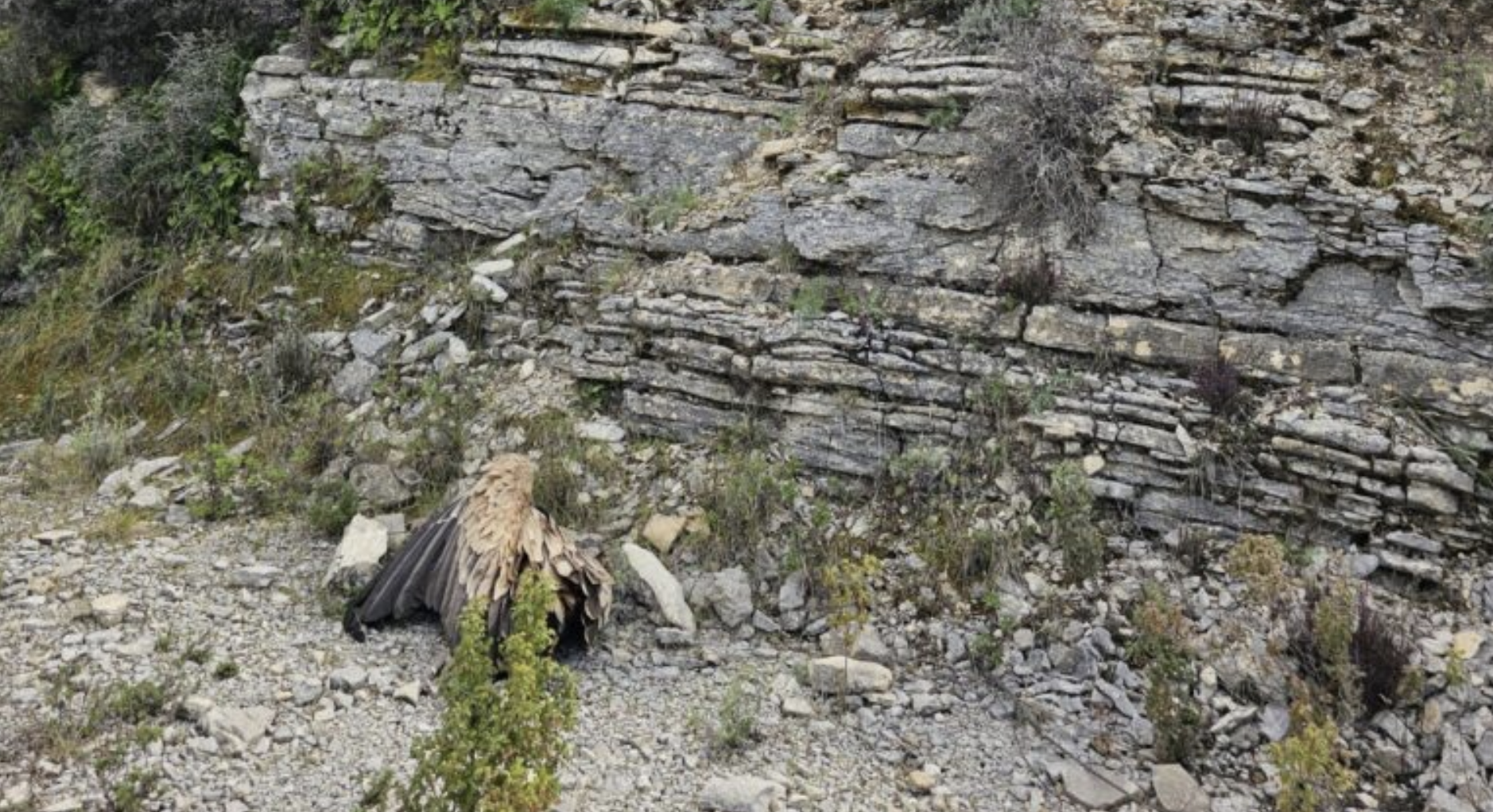
A Rüppell’s Vulture (Gyps rueppellii) was recorded this summer at the feeding station for scavengers in Bruçó, Mogadouro, which is managed by Palombar Associação de Conservação da Natureza e do Património Rural under the LIFE Rupis Project.
Rüppell’s Vulture in Portugal
On 19 June 2019, a camera-trap captured Europe’s 5th vulture in Portugal. A Rüppell’s Vulture visited a LIFE Rupis feeding station alongside many Griffon Vultures.
According to data from the Aves de Portugal portal, by the end of 2009, 13 observations of this species were officially approved by Comité Português de Raridades.
This African species, classified as Critically Endangered by the International Union for Conservation of Nature (IUCN), is still a rarity in Portugal although it seems to be increasingly common in Europe.
Rüppell’s Vulture

The Rüppell’s Vulture (Gyps rueppelli) is an African species whose distribution range is located in the equatorial and eastern areas of the continent. It resembles our Griffon Vulture (Gyps fulvus), especially the juveniles and immature birds, being slightly smaller in size. The IUCN’s Red List of Threatened Species considers it Critically Endangered, which is the last category before global extinction, due to the rapid declines of several populations across Africa.
It’s declining state is mostly due to the successive and frequent mass poisonings in Africa, which are driving several species of African vultures to extinction. The Vulture Multi-species Action Plan (Vulture MsAP), co-developed by us here at the Vulture Conservation Foundation, and endorsed by the Convention for Migratory Species (CMS), concludes that poison is the biggest threat to vultures worldwide, and a significant part of this global action plan for vultures focuses on the actions needed to fight this threat. Unfortunately, experts foresee a rather bleak future in the short term if poisoning events keep occurring at this rate.
Rüppell’s Vulture and Europe
In consequence, Rüppell’s Vultures are becoming alarmingly scarce in Africa but, surprisingly, they are increasingly seen in Europe. This is probably due to increased mixings of individuals of this species with wintering juvenile Griffon Vultures in West Africa. A percentage of Europe’s growing population of Griffon Vultures winters in the Sahel zone of West Africa, where it will encounter some Rüppell’s Vultures. When European Griffons start their migration north, they probably drag some African vultures with them, and with plenty of food in Europe, they are beginning to call our continent home. Even though there are no definite breeding records of this species in Europe yet, the species was recently added to Andalucía’s list of vultures, making it Europe’s 5th vulture species!
Sign up to our newsletter to receive the latest vulture news!
LIFE Rupis

The LIFE Rupis conservation project, led by Portuguese wildlife organisation Sociedade Portuguesa para o Estudo das Aves (SPEA), and funded by the European Union’s LIFE Fund and the MAVA Foundation, is working in the cross-border Douro region of Spain and Portugal to protect and strengthen the populations of Egyptian vultures and Bonelli´s eagle. With around 135 breeding pairs, the region has one of the largest population of Egyptian vultures in Europe. Creating a network of feeding stations, improving habitat and nesting sites as well as tackling the major threats of electrocution from electricity pylons and illegal wildlife poisoning, the LIFE Rupis project will strengthen the population and improve breeding rates.




